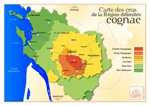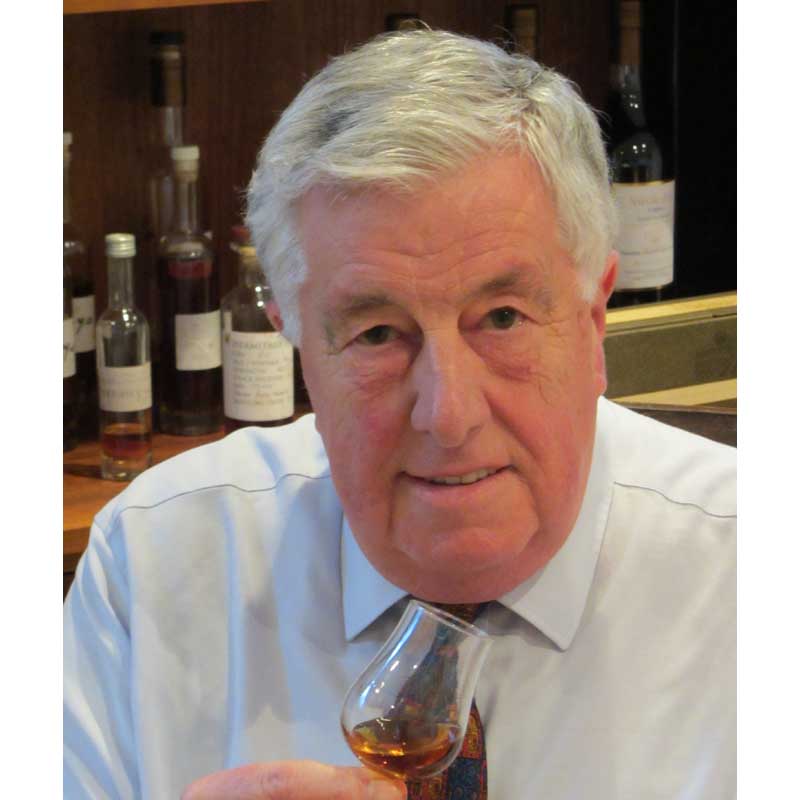
Cognac Gift Presentation and New Armagnac Vintages
Lots of new stock has arrived on our shelves during the last month. An exciting new concept for the cognac connoisseur is a Cognac Gift Presentation offering 2 x 20cl bottles of very special old cognacs. Enough to try, enjoy and share with a friend and the perfect way to sample some of the very best the Charente has to offer. We also have a brand new Hermitage Cognac 1976 distilled 40 years ago. This vintage is proving to be exceptionally rare so we don’t expect our stock to be on the shelves for long! In addition, we have taken… Read more

The Charente Scene – Spring 2016
It seems that in order to get a bit more brand awareness, some cognac houses on the Charente Scene have been changing their image. Larsen has updated its style and changed its strapline from ‘Cognac of the Vikings’ to ‘Spirit of Adventure’. Hine has changed its colour from purple to gold and moved away from ‘Vintage Cognacs’ to ‘Maison fondée en 1763’. Not content with one brand update they have reintroduced the salamander to one of their other brands, Monnet, and repackaged it in fresh blue and white. Brand changes for Deau and Tessendier with their Park range of blends… Read more
Amazon’s Sommelier by Phone Service
Online retailer, Amazon, has just launched a new Sommelier By Phone Service in Japan. Prospective purchasers can leave their phone number on the purchasing page of a specific bottle; they will then be telephoned by a sommelier who will answer questions and advise on flavour and alternatives; more information will follow by e mail. Another great innovation by Amazon – or is it? Here at Brandyclassics we have been offering this service since our inception, a quarter of a century ago. Always happy to talk and advise about our handpicked products by phone or email, we think our experience and expertise… Read more

David on Technical Topics – The Cognac Wines
For many years, cognac quality has centred mainly on the distillation process and the basic needs of providing a relatively acidic and low alcohol wine. After the Phylloxera, in the late nineteenth century, viticulturists started to recognise the need to control the wine, harvest and production methods to a far higher level. The St Emillion (Ugni Blanc) grape, favoured for its resistance to disease and greater cropping, became the dominant variety and a key part of modern cognac wines. The increasing demand on the industry for more cognac created further demands on the viticulturist to provide greater quantities of clean… Read more
COGNAC TRADE TRAINING
Introduction Cognac has been associated with tradition, luxury and refinement over the centuries and is known to have been the favourite aperitif in the days of Nelson’s navy. The region that produces this drink of great style is known as the Charentes and although it is quite small, the many different qualities and styles that are produced vary considerably in aroma and taste. There are thousands of producers making the water clear eau de vie, the distilled wine, ready for its long ageing in oak casks, but many sell it to big brands who blend it, store it and sell… Read more

David on Technical Topics – The Vines
The chalky soil of the Charente, particularly in the Champagnes, is not unique since it is also a notable feature of the Champagne growing region (it is the ‘Champenoise’ who stole the name for their famous drink). The chalk provides excellent drainage and can also store substantial quantities of water which the vine roots can easily access. Crucially too, chalky soil, which provides very few nutrients, improves the quality of the grapes. Whilst the ‘terroir’ in the Cognac region can change, the grape varieties used have changed only twice in the last four centuries. In the 17th Century the region… Read more

David on Technical Topics – ‘Terroir’, The Land
The French use the term ‘terroir’ uniquely to describe geological and climatic conditions as a basis for their system of ‘Appellations Cognac Controlee’. This is the geographic, quality control that defines the cognac crus and is vital for the Cognaçaise to differentiate their products. All the brandies entitled to the ‘cognac appellation’ are made from the same grape varieties, harvested in the same way, at the same time of the year, fermented in similar vats, distilled in the same type of still and aged in regulation oak barrels. There are six crus of cognac and in the centre is the… Read more
Half a Million Bottles of Cognac Seized
Chinese customs officials have arrested four suspected smugglers and confiscated more than 520,000 bottles of Louis Royer XO Cognac bound for the Chinese mainland. It is alleged that those arrested avoided paying the correct excise duty and VAT by lowering the declared price by 30% and falsifying customs declarations at their HK company. Clamping down on imports appears to be another measure by the Chinese government to curb luxury spend and cognac exports to China continue to fall.

Entry Level Cognac Brands Haven’t Improved Quality
According to Hine Cognac’s CEO, “The trend towards premiumisation across all consumer categories, including fashion and alcohol, is seeing brands improve their image without improving quality.” This trend has meant that lower grade brands have been able to improve their overall perception without improving their quality. However he goes on to say that “connoisseurs are now seeking products with flawless raw material, of precise provenance and uncompromising quality” in their search for truly premium brands. So, it’s not about the logo, discerning customers want superb quality, like Hermitage – take our 43 year old for example.

Revamping Cognac’s Image?
Various spirits have enjoyed a revamping of their image in recent years as cocktail culture continues to evolve, but what about cognac? It still tends to conjure up one of two images. The first is of an older gentleman in a suit, sitting in an overstuffed leather chair next to the fire with a large snifter. The second involves a whole lot of bling and rap music, thanks to the various rappers who have claimed cognac as their signature beverage. But what about influencing those outside of these two somewhat polarised groups? Even cocktail consultant Jordan Watson does not believe… Read more
